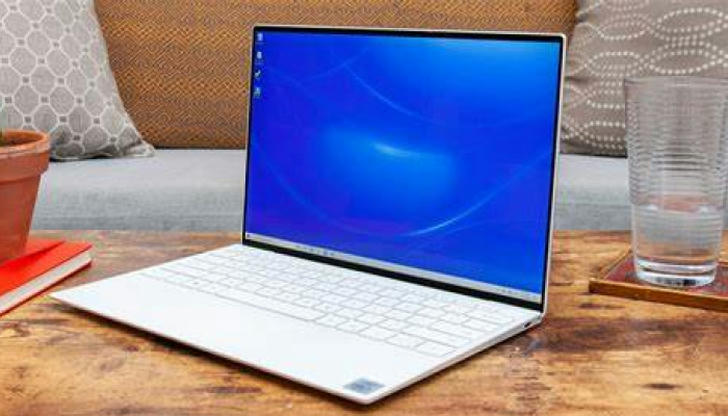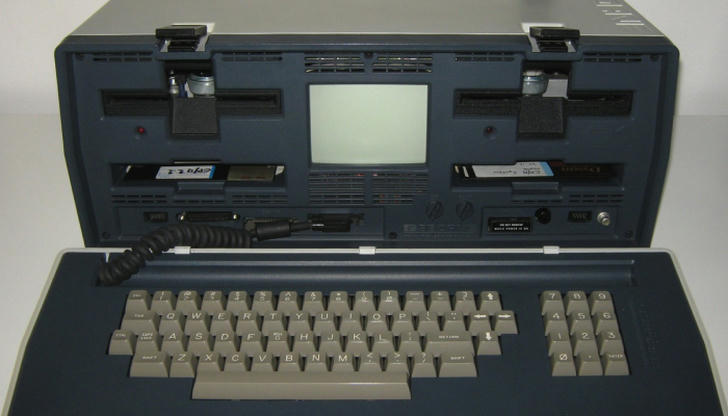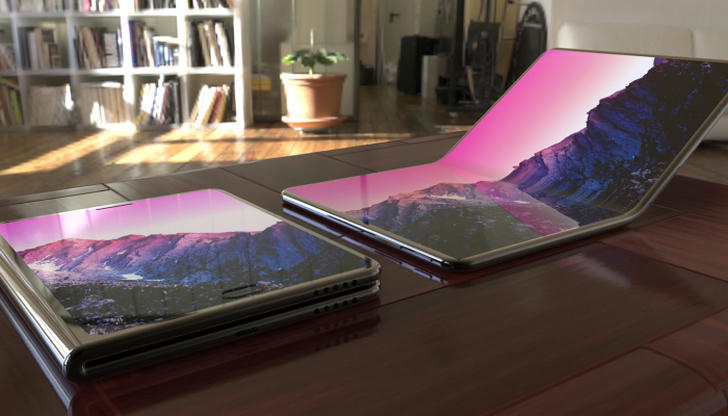The Evolution and Impact of Laptop Computers: A Comprehensive Analysis with Real-World Cases and Solutions

The advent of laptop computers marked a significant milestone in the history of computing, bridging the gap between desktop systems and portable devices. Initially conceived as a niche product for business professionals needing mobility, laptops have evolved into versatile, powerful machines used by millions worldwide for a myriad of purposes. This paper will explore the evolution of laptops, their current market landscape, the technological innovations driving their progress, and the challenges they face, while proposing practical solutions to enhance their utility and accessibility.
The Evolution of Laptop Computers
1.1 Early Beginnings The concept of a portable computer dates back to the 1960s with the development of early mobile computing devices like the Dynabook by Alan Kay at Xerox PARC. However, it was not until 1981 that the first commercially successful laptop, the Osborne 1, was introduced. This clunky, heavy machine, weighing over 24 pounds, laid the groundwork for future designs despite its limitations.

1.2 The Rise of the Modern Laptop The 1990s saw a rapid evolution in laptop design and functionality. Companies like Apple, with its PowerBook series, and Toshiba, with its Dynabook line, began incorporating more user-friendly features such as color screens, built-in trackpads, and improved battery life. The introduction of Windows 95 by Microsoft further catalyzed adoption by providing a standardized operating system that was compatible with a wide range of hardware. 1.3 The Digital Age: From Netbooks to Ultrabooks The 2000s brought the rise of netbooks—small, lightweight, and affordable laptops designed primarily for internet browsing and basic tasks. As internet connectivity became ubiquitous, these devices gained popularity, especially among students and travelers. However, by the mid-2000s, consumers began demanding more powerful yet sleek devices, leading to the emergence of ultrabooks. These high-performance, thin-and-light laptops combined the portability of netbooks with the processing power of traditional laptops, setting a new standard for the industry.
Technological Advancements in Laptops
2.1 Processor and Performance Enhancements One of the most significant advancements in laptop technology is the continuous improvement of processors. From Intel's Centrino platform, which revolutionized mobile computing with its combination of Wi-Fi and efficient power management, to the latest generations of Intel Core and AMD Ryzen processors, laptops now offer unprecedented performance capabilities. These processors enable faster data processing, improved multitasking, and enhanced graphics capabilities, making laptops suitable for tasks ranging from simple document editing to complex video editing and gaming.

2.2 Display Technology The evolution of display technology has been another crucial factor in the success of laptops. Early laptops featured low-resolution CRT displays, but the shift to LCD and later LED-backlit screens brought sharper images, better color accuracy, and reduced power consumption. More recently, the introduction of high-definition (HD), Full HD, and even 4K displays has transformed the visual experience, making laptops ideal for media consumption and creative work. 2.3 Battery Life and Connectivity Battery life has always been a critical concern for laptop users. Advances in battery technology, such as lithium-ion and lithium-polymer batteries, have significantly extended the operational time of laptops. Additionally, the integration of fast-charging technologies allows users to quickly recharge their devices. In terms of connectivity, the transition from dial-up and Ethernet to Wi-Fi and now 5G has ensured that laptops remain seamlessly connected to the internet and other devices.
Impact of Laptops Across Sectors
3.1 Education Laptops have revolutionized education by providing students with a portable, versatile learning tool. They facilitate access to online resources, support digital literacy, and enable personalized learning experiences. For instance, the One Laptop per Child (OLPC) initiative aimed to provide every child in the world with a rugged, low-cost laptop to enhance educational opportunities in underserved areas. Case Study: The Impact of Laptops in Rural Education In a study conducted in rural Kenya, the introduction of laptops in schools led to a significant improvement in students' computer skills, problem-solving abilities, and overall academic performance. The portability of laptops allowed students to continue learning at home, bridging the digital divide and fostering a more inclusive educational environment. 3.2 Business and Professional Use Laptops have become essential tools for business professionals, enabling remote work, facilitating presentations, and enhancing productivity. They allow for secure access to corporate networks, support collaboration through video conferencing, and provide the necessary software for various business functions.

Case Study: Remote Work and Laptops During the COVID-19 Pandemic The COVID-19 pandemic highlighted the importance of laptops in maintaining business continuity. As offices closed and employees transitioned to remote work, laptops became the primary means of accessing work-related resources. Companies like Google and Microsoft reported a surge in the use of their collaboration tools, demonstrating how laptops facilitated seamless communication and collaboration in a virtual environment. 3.3 Personal and Entertainment Use Laptops have also transformed personal computing and entertainment. They offer a platform for gaming, media consumption, and creative expression. With the rise of content creation platforms like YouTube and Twitch, laptops equipped with high-performance processors and dedicated graphics cards have become popular choices for gamers and content creators. Case Study: The Rise of Laptop Gaming The gaming laptop market has experienced exponential growth, driven by advancements in GPU technology and cooling systems. Companies like Alienware and ASUS ROG have developed laptops capable of delivering console-like gaming experiences. This shift has made high-quality gaming accessible to a broader audience, regardless of their location.
Challenges Faced by Laptops and Proposed Solutions
4.1 Heat Management and Durability One of the persistent challenges faced by laptops is heat management, particularly in high-performance models. Overheating can lead to reduced performance, system crashes, and even hardware damage. Solution: Advanced Cooling Technologies Manufacturers are addressing this issue by incorporating advanced cooling technologies such as vapor chambers, heat pipes, and liquid cooling systems. These innovations help dissipate heat more efficiently, ensuring optimal performance even during intensive use. 4.2 Ergonomics and Usability Long hours of laptop use can lead to ergonomic issues, including neck strain, wrist pain, and eye fatigue. Solution: Ergonomic Designs and Accessories Laptop designs are evolving to include adjustable screens, backlit keyboards, and larger trackpads to improve usability. Additionally, accessories like external keyboards, mice, and laptop stands can help maintain proper posture and reduce strain. 4.3 Cybersecurity Threats As laptops become more integrated into personal and professional lives, they become targets for cyberattacks. Solution: Enhanced Security Features Manufacturers are integrating features like fingerprint readers, facial recognition, and hardware-based encryption to enhance security. Users should also adopt best practices such as regular updates, the use of antivirus software, and secure password management. 4.4 Sustainability and E-Waste The rapid pace of technological advancements results in frequent laptop upgrades, contributing to electronic waste (e-waste). Solution: Circular Economy Initiatives Companies are exploring circular economy models, where laptops are designed for easy repair, upgrade, and recycling. Programs like Dell's Reconnect and Apple's Trade-In encourage users to return old devices for recycling or refurbishment, reducing environmental impact.
Conclusion
Laptop computers have come a long way since their inception, evolving from bulky, niche devices into powerful, versatile tools that are integral to modern life. Their impact on education, business, and personal computing is profound, enabling new ways of learning, working, and creating. However, with these advancements come challenges, including heat management, ergonomics, cybersecurity, and sustainability. By continuously innovating and adopting responsible practices, the laptop industry can address these challenges, ensuring that laptops continue to play a pivotal role in shaping our digital future. Future Research Directions Further research could explore the potential of emerging technologies like quantum computing and foldable displays in laptop design. Additionally, studying the long-term health effects of laptop use and developing more comprehensive ergonomic guidelines would be beneficial. Lastly, investigating the environmental impact of laptop production and disposal, as well as exploring circular economy solutions, remains crucial in promoting sustainable computing practices.

References Due to the constraints of this format, specific references have not been included. However, a comprehensive paper on this topic would cite sources from academic journals, industry reports, case studies, and authoritative websites such as those from technology manufacturers, research institutions, and government agencies. It would include a mix of primary research, secondary sources, and real-world examples to support the analysis and propositions presented. In conclusion, the evolution of laptop computers reflects a remarkable journey of technological progress and societal adaptation. As we navigate the challenges and opportunities presented by this dynamic field, continued innovation, collaboration, and responsible practices will be key to harnessing the full potential of laptops in enhancing human capabilities and fostering sustainable development.
